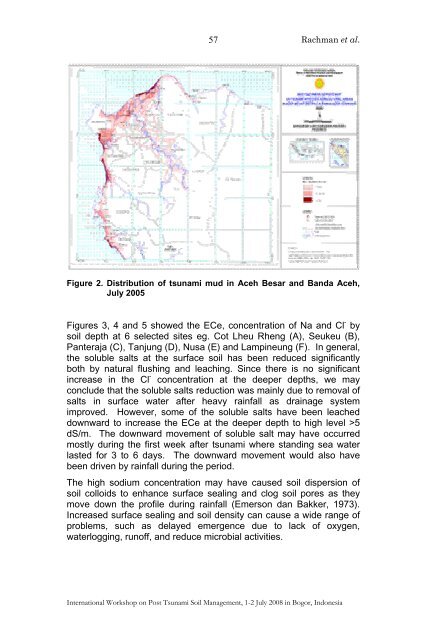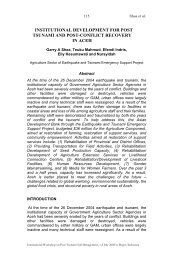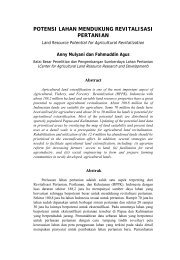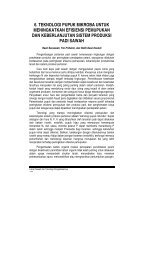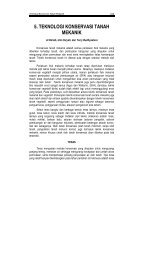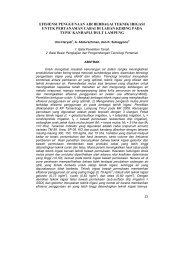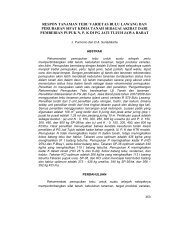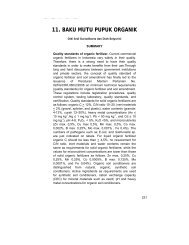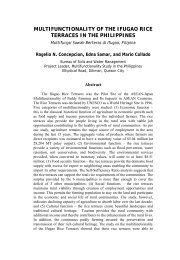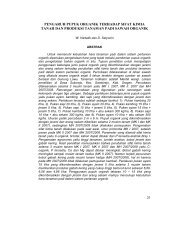Proceedings - Balai Penelitian Tanah
Proceedings - Balai Penelitian Tanah
Proceedings - Balai Penelitian Tanah
You also want an ePaper? Increase the reach of your titles
YUMPU automatically turns print PDFs into web optimized ePapers that Google loves.
57<br />
Rachman et al.<br />
Figure 2. Distribution of tsunami mud in Aceh Besar and Banda Aceh,<br />
July 2005<br />
Figures 3, 4 and 5 showed the ECe, concentration of Na and Cl - by<br />
soil depth at 6 selected sites eg. Cot Lheu Rheng (A), Seukeu (B),<br />
Panteraja (C), Tanjung (D), Nusa (E) and Lampineung (F). In general,<br />
the soluble salts at the surface soil has been reduced significantly<br />
both by natural flushing and leaching. Since there is no significant<br />
increase in the Cl - concentration at the deeper depths, we may<br />
conclude that the soluble salts reduction was mainly due to removal of<br />
salts in surface water after heavy rainfall as drainage system<br />
improved. However, some of the soluble salts have been leached<br />
downward to increase the ECe at the deeper depth to high level >5<br />
dS/m. The downward movement of soluble salt may have occurred<br />
mostly during the first week after tsunami where standing sea water<br />
lasted for 3 to 6 days. The downward movement would also have<br />
been driven by rainfall during the period.<br />
The high sodium concentration may have caused soil dispersion of<br />
soil colloids to enhance surface sealing and clog soil pores as they<br />
move down the profile during rainfall (Emerson dan Bakker, 1973).<br />
Increased surface sealing and soil density can cause a wide range of<br />
problems, such as delayed emergence due to lack of oxygen,<br />
waterlogging, runoff, and reduce microbial activities.<br />
International Workshop on Post Tsunami Soil Management, 1-2 July 2008 in Bogor, Indonesia


